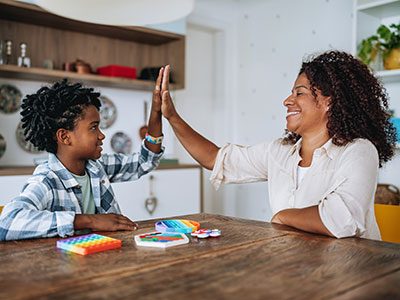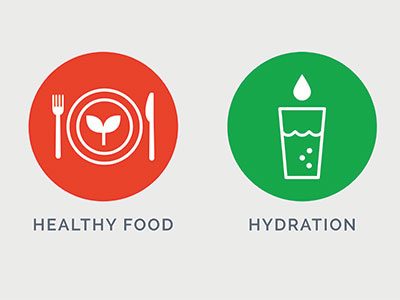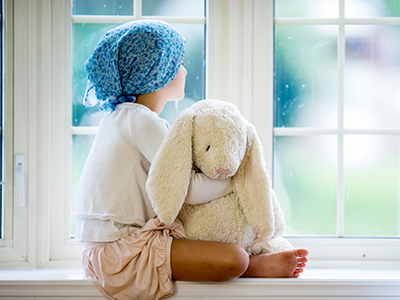My almost 5-year-old screams at me, cries, whines and stomps her feet if I don’t respond to a question exactly how she wants me to. How can I stop this behavior? As an example, if she asks me something and I say, “sure” she’ll get mad and yell at me to say yes. If I tell her “no” she’ll do the same. If I can’t hear her and ask her to repeat the question she’ll scream and shout “say yes or no!” What can I do to stop this bad behavior?
It is tough when kids act in ways that we don’t understand, especially when it involves challenging behaviors, like yelling and whining! Young children have fewer ways of identifying and coping with their emotions so these types of behaviors are not uncommon at this age.
As a first step, it’s important for us to find ways to keep our calm, as that can help children remain calmer and also helps us get through the challenging moment. This means making sure you find ways to recharge your own batteries (e.g., self-care) and find ways of getting through these difficult moments. Having a mantra (e.g., “this too shall pass” or “I’m doing the best that I can”) or small tricks to keep our cool (e.g., taking 3 deep breaths, counting to 10 before responding) helps us keep our cool and helps model coping skills.
A second step is trying to understand their behavior, which for young children, requires us to be a detective since they typically have trouble expressing their thoughts, feelings and motivations clearly. Noticing things like whether the behavior is worse at certain times of day (such as when she is hungry, tired or needing attention) or occurs following certain types of questions may help figure out strategies for prevention.
You can help your daughter learn how to identify, express and cope with her emotions by being an “emotion coach.” The best time for this coaching is usually when children are calm, rather than in the middle of a meltdown. You can use emotions that she’s having, you’re having or even other people are having. For example, you can say “Mommy is sad right now because it’s raining out so we have to stay inside. I’m going to take some deep breaths to help me calm down and then find something fun to do inside to take my mind off the rain.” Or you could say, “you seem frustrated because the puzzle pieces are not fitting together. I like how you’re staying calm and trying again to figure it out!”
Another strategy is to use something called “differential attention” – giving more attention to the behaviors you like and less attention to problematic or annoying behaviors that are not dangerous. In other words, ignore your daughter when she’s screaming and praise her when she’s staying calm. Be sure to be specific, positive and immediate with your praise. For example, saying “nice job staying calm and using your polite voice!” will help her learn faster than saying “nice job!” or “thanks for not screaming.” Just remember, when you use this method and start to ignore a behavior, it’s important to stick with it and ride it out. Oftentimes, the bad behavior gets worse before it gets better. But it should get better!
Lastly, considering writing a Social Story for her. Social stories are ‘short personalized books’ parents or teachers can write to help children understand family rules, social expectations or prepare for a new experience. When it comes to wanting to prevent problematic behaviors, social stories can help your child understand the desired behaviors you want to see, such as a quiet voice and kind, polite words in this situation. The story should have your child as the main character, then describe the positive behaviors you want to see when she asks a question, and use pictures – she can even help draw. For example, the title of her social story could be: “When I ask Mommy a question, I can be calm and use polite words.” It should be encouraging, positive and short (5-10 pages) to keep your children’s attention and focus. Use your detective skills to see when the best time of day would be to read it, ideally when she is in a good mood, curious and way before any problem behavior begins. Read it daily and keep it upbeat, so she wants to read a story encouraging great behavior!
 https://riseandshine.childrensnational.org/wp-content/uploads/2025/05/child-having-tantrum-feature.jpg
300
400
webteam
https://riseandshine.childrensnational.org/wp-content/uploads/2017/11/childrens_riseandshine_logo.jpg
webteam2025-05-07 15:54:412025-05-07 16:19:29Helping autistic children manage big feelings
https://riseandshine.childrensnational.org/wp-content/uploads/2025/05/child-having-tantrum-feature.jpg
300
400
webteam
https://riseandshine.childrensnational.org/wp-content/uploads/2017/11/childrens_riseandshine_logo.jpg
webteam2025-05-07 15:54:412025-05-07 16:19:29Helping autistic children manage big feelings






















Leave a Comment
Want to join the discussion?Feel free to contribute!